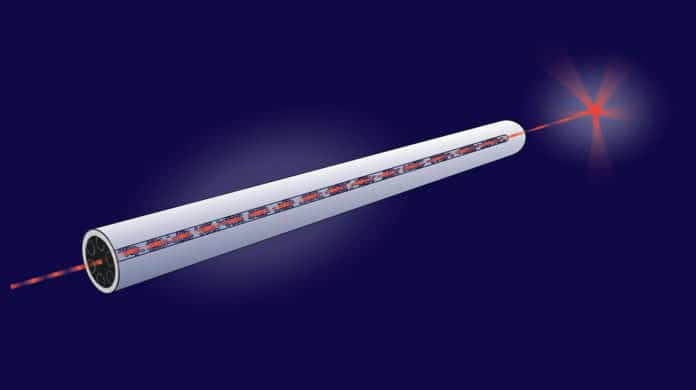Luc Thévenaz, the head of the Fiber Optics Group in EPFL’s School of Engineering, has finally made it happen. He, along with his colleagues, has developed a technology to amplify light inside the latest hollow-core optical fibers.
This new approach relies on new hollow-core optical fibers that are filled with either air or gas.
Professor Thévenaz explains, “The air means there’s less attenuation so that the light can travel over a longer distance. That’s a real advantage. But in a thin substance like air, the light is harder to amplify. That’s the crux of the problem: light travels faster when there’s less resistance, but at the same time, it’s harder to act on. Luckily, our discovery has squared that circle.”
Scientists added pressure to the air in the fiber to give them some controlled resistance. It works like optical tweezers- the air molecules are compressed and form into regularly spaced clusters.
This also generates a sound wave that increases the amplitude and effectively diffracts the light from an authoritative source towards the weakened beam so that it is amplified up to 100,000 times.
In this way, the technique makes the light more powerful.
Fan Yang, a postdoctoral student, said, “Our technology can be applied to any light, from infrared to ultraviolet, and any gas.”
Flavien Gyger, a Ph.D. student, said, “the technology could serve other purposes in addition to light amplification. Hollow-core or compressed-gas optical fibers could, for instance, be used to make extremely accurate thermometers.”
“We’ll be able to measure temperature distribution at any point along with the fiber. So if a fire starts along a tunnel, we’ll know exactly where it began based on the increased temperature at a given point. The technology could also be used to create a temporary optical memory by stopping the light in the fiber for a microsecond – that’s ten times longer than is currently possible.”
Journal Reference:
- Fan Yang, Flavien Gyger and Luc Thévenaz, “Intense Brillouin amplification in gas using hollow-core waveguides,” Nature Photonics 14, 700–708 (2020). DOI: 10.1038/s41566-020-0676-z
